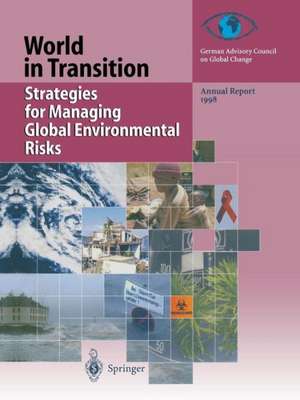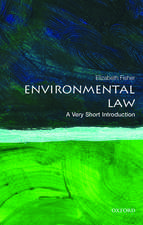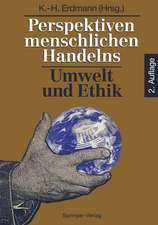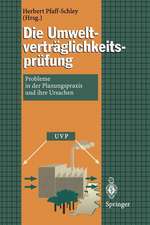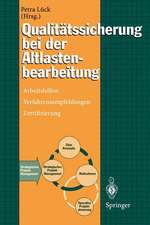Strategies for Managing Global Environmental Risks: Annual Report 1998: World in Transition, cartea 1998
Autor Kenneth A. Loparoen Limba Engleză Paperback – 7 iul 2012
Preț: 407.01 lei
Nou
Puncte Express: 611
Preț estimativ în valută:
77.89€ • 80.47$ • 64.83£
77.89€ • 80.47$ • 64.83£
Carte tipărită la comandă
Livrare economică 26 martie-09 aprilie
Preluare comenzi: 021 569.72.76
Specificații
ISBN-13: 9783642523779
ISBN-10: 3642523773
Pagini: 384
Ilustrații: XXIV, 359 p.
Dimensiuni: 210 x 279 x 20 mm
Greutate: 0.86 kg
Ediția:Softcover reprint of the original 1st ed. 2000
Editura: Springer Berlin, Heidelberg
Colecția Springer
Seria World in Transition
Locul publicării:Berlin, Heidelberg, Germany
ISBN-10: 3642523773
Pagini: 384
Ilustrații: XXIV, 359 p.
Dimensiuni: 210 x 279 x 20 mm
Greutate: 0.86 kg
Ediția:Softcover reprint of the original 1st ed. 2000
Editura: Springer Berlin, Heidelberg
Colecția Springer
Seria World in Transition
Locul publicării:Berlin, Heidelberg, Germany
Public țintă
ResearchCuprins
A Executive summary: Strategies for Managing Global Environmental Risks.- 1 Global change: A fresh approach to new risks.- 2 Localizing risks in normal, transitional and prohibited areas.- 3 Categorization according to risk classes.- 4 Class-specific strategies and tools for action.- 5 Prime recommendations for action.- B Introduction.- C Concepts of risk and their applications.- 1 Risk: Concepts and implications.- 2 Categories of damage and criteria for selecting globally relevant environmental risks.- 3 Risk characterization.- 4 Constructing a typology of risk.- D The environmentally mediated risk potentials of global change.- 1 Introduction.- 2 Technological risks.- 3 Infectious diseases as a global risk.- 4 Biological risks.- 5 Biogeochemical and chemical risks.- 6 Climate risks.- 7 Natural disasters.- 8 Synopsis: An overview of global risk potentials.- E Integrated risk analysis.- 1 Risk modulators (amplifiers and intervening factors).- 2 Specific vulnerabilities of regions and social groups.- 3 Examples of complex risks.- 4 Risk potentials of complex environmental systems.- F Risk policy.- 1 Risk evaluation and the choice of tools.- 2 Liability.- 3 Environmental liability funds.- 4 Permitting procedures.- 5 Environmental levies and tradeable permits.- 6 Political strategies.- 7 Risk communication.- 8 Discursive approaches.- G Strategies for dealing with unknown risks.- 1 The importance of unknown risks: Preventing ‘future ozone holes’.- 2 Discovering unknown risks as an environmental policy task.- 3 The importance of cognitive, motivational and social factors for dealing with unknown risks.- 4 Preventive risk management under uncertainty.- 5 Synthesis.- H Recommendations.- 1 Recommendations for research.- 2 Recommendations for political action.- I References.-J Glossary.- K The German Advisory Council on Global Change.- L Index.
Textul de pe ultima copertă
Global risk potentials and their interplay with economic, social and ecological processes of change have emerged as a challenge to the international community. Never before has human intervention in nature assumed global dimensions. This has been driven on the one hand by a growing global population, particularly in developing countries, and on the other hand by rising human aspirations in conjunction with specific patterns of production and consumption, above all in industrialized countries. By presenting this report, the Council hopes to contribute constructively to an effective, efficient and objective management of the risks of global change. The approach taken by the Council is first to classify globally relevant risks and then to assign to these classes of risk both established and innovative risk assessment strategies and risk management tools. On this basis, management priorities can be set. However, the Council notes that it is impossible to safeguard against all global risks, particularly as exploiting opportunities will always entail taking risks.
To keep the risks to the international community posed by global change as small as possible, the Council recommends a number of cross-cutting strategies for international policies. These include worldwide alignment of liability law, creation of environmental liability funds, establishment of a United Nations Risk Assessment Panel and implementation of strategies aimed at reducing vulnerability to risk. The scientists further put the case for improving research promotion and maintaining basic research that is free of vested interests.
To keep the risks to the international community posed by global change as small as possible, the Council recommends a number of cross-cutting strategies for international policies. These include worldwide alignment of liability law, creation of environmental liability funds, establishment of a United Nations Risk Assessment Panel and implementation of strategies aimed at reducing vulnerability to risk. The scientists further put the case for improving research promotion and maintaining basic research that is free of vested interests.
Caracteristici
Interdisciplinary and practical approach
